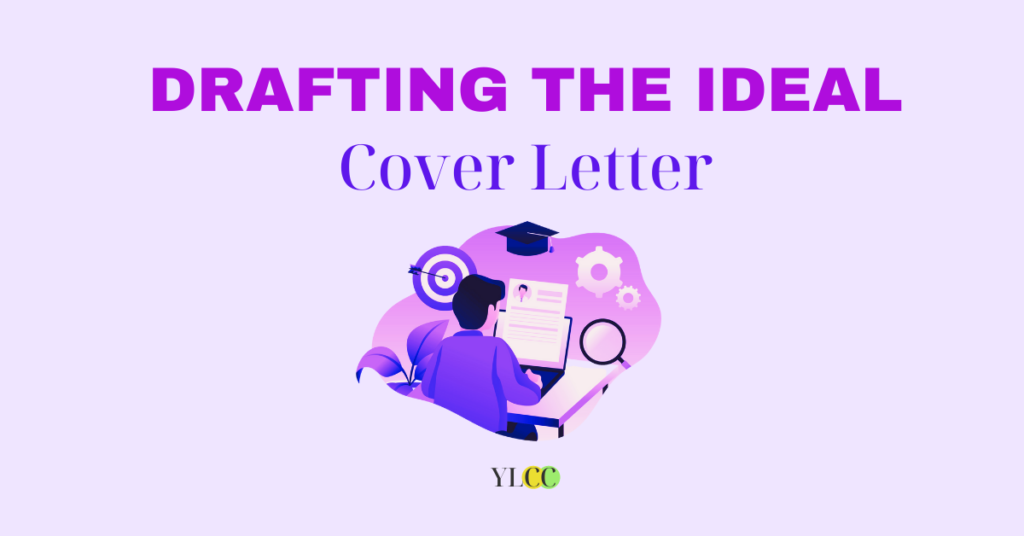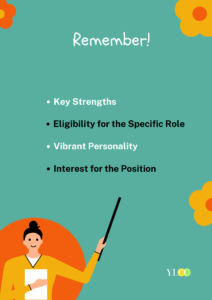
Drafting The Ideal Cover Letter
What is a cover letter?
A cover letter is a document you send with your CV (traditionally as the front cover).
However, it is different from a CV in that instead of being an overview of your qualifications, skills and experience, it is customized or specifically written for the job you are applying– allowing you to highlight certain areas you think would make you a perfect fit for the role.
Why is a cover letter important?
A cover letter is not just a formality or a courtesy- it should be considered more as an opportunity to impress. Several surveys prove that applications accompanied with a well-written cover letter receive more favourable consideration. A strong cover letter can convey to the employer your:
- Key Strengths
A cover letter is actually making ‘the first impression’ to your employer. It is essentially your first chance to stand out from the other applicants and register a positive note prior to the interview. A good CV therefore increases the likelihood of progression through the selection stage.
- Eligibility For The Specific Role
A major part of a cover letter’s purpose is the customization of your application with regards to a particular job or role. The cover letter allows you to link your unique set of skills, knowledge and experience to the tailored needs of an employer and clearly demonstrates that you meet the key requirements of the position applied for.
- Vibrant Personality
Unlike the CV, which is formally drafted with only necessary information, the Cover Letter allows you to show your personality- or at least an employer can get an idea of the same from the tone it has been drafted in. A good cover letter can convey strong professionalism, value addition to the team, and much more.
- Interest For The Position
A carefully drafted cover letter conveys that the candidate is substantially invested in the role or position and therefore has taken the trouble of going the extra mile to draft the same. It expresses your enthusiasm in the opportunity and commitment in the event of selection.
In this article, Team YLCC tries to highlight certain important tips to formulate the ideal cover letter for a job or internship application. Read on!
- Choosing The Right Type Of Cover Letter
This is the first step to get your process right. Choosing the right type of cover letter can eventually make or break your application.
So what are the different types of cover letter?
Traditional cover letters (also known as application letters) are written to apply for specific job openings.
Similarly, letters of interest (also known as prospecting letters), aim at inquiring about possible job openings at companies.
Referral cover letters are written to ask for references for a job.
Lastly, cold contact cover letters are written to companies that have not published any job openings.
It is therefore important to choose a cover letter that unambiguously reflects the goal and purpose of your application.

- Highlight beyond your resume
The cover letter is an opportunity to elaborate on aspects which could not be done in the Curriculum Vitae due to space constraints. The cover letter should be different in the sense that it should convey in greater details what value you bring to the table. An ideal approach is to select two or three primary skills that are already present in the CV and highlight them with an explanation- providing examples of how you applied these skills in a real-time situation can be one way to do this.
For example, if you are applying for a teaching position, you can demonstrate how you successfully tutored a student in the past. It is highly recommended that you include numbers to support your claims- this adds credibility to your skills. If you are a student applying for an internship, you should highlight the work you did in your past internships, or volunteering experiences and how they will help you in the present role.
- Write A New Cover Letter For Every Application
This is a standard that should be followed by every applicant. The point of a cover letter is to highlight the application, and therefore each new application warrants a new cover letter drafted specifically to meet the requirements of that instance. Using generic cover letter templates for every job is a quick way to get your application discarded, and is therefore, strongly discouraged.
Moreover, a hiring manager can always tell if you have customized the cover letter for the respective application. Not doing the same will not only minimize your chances of selection, but also harm your reputation and credibility. Here are some ways to customise your cover letter-
Study the job listing carefully.
Select your qualifications- skills, abilities and experiences to match the job listing.
Strategically elaborate on those skills in the cover letter.
Use keywords that are likely to make a strong impact.
- Addressing the right person
Addressing the right person in the organization is one of the most important elements of your cover letter. It is imperative to address the letter to the specific hiring manager who will be reading the letter. If this information is not apparent from the job listing or vacancy notification, you may consider doing some research about the organization on its official website and/or look up on platforms like LinkedIn for clarity with respect to who is in charge of the hiring process. As a last resort, you may call the company and ask.
Addressing the hiring manager by name can help you strike a direct chord with the individual. In addition, if you have any acquaintances in the organization, you may ask them for a reference to include in the cover letter.
- Highlight Specific, Relevant Skills
If your CV is a general statement giving an overview of your skillset, the cover letter should be much more specific and highlight only those areas which are relevant to the job. For example, a role in the public relations sector may require good social media and communication skills. This can be highlighted further in the cover letter. However, avoid over-formal language and cliché phrases such as ‘team player’ or ‘go-getter’ to explain your skills- the hiring manager is probably tired of hearing them.
- Do Not Focus On What Is Missing
A cover letter is not a platform to justify your shortcomings or explain your lack of qualifications, if any. Instead of showing yourself in a negative light, restrict yourself to highlighting the skills and experiences that you do possess. However, in case you have a gap in your employment history (from being laid off, out of work or taking some time off to spend with your family or tend to personal issues), a cover letter is a good opportunity to explain that gap. However, this should be done in a brief manner, and must be immediately followed by highlighting your skills. Do not forget that the bottom line is to assert your own eligibility for the position.
- Format Your Cover Letter To Perfection
It is not only necessary for your CV and Cover Letter to be factually incorrect, but it should also look professional and polished. Formatting is an integral step to perfecting your cover letter and making a strong first impression. This also increases your chances of securing an interview.
Formatting includes providing margins so that the text does not look cramped for space, adding adequate space before and after every paragraph, and select a formal font (like Times New Roman) and size that promotes readability. Make sure to include important details like your contact information, the date, and the details of the organization. You may also choose to abridge the text to keep it crisp- an ideal cover letter is no longer than a page.
- Proofread Your Cover Letter
Last, but not the least, proofreading your cover letter prior to sending it across is a must. Focus on weeding out spellings and grammatical mistakes that reflect poorly on your due diligence. It is often best to use simple language and avoid unnecessary jargon. The cover letter should also be scrutinized in the light of factual accuracy with respect to the company’s name, hiring manager’s name, and other information.
Another way to approach this is getting your cover letter proofread by an expert who will optimise it in the best possible manner.
- Comply with the instructions
Now that your cover letter is ready, you are ready to send it across. But in this regard, it is very important that to comply with the instructions that are given in the job listing or notification. If the instruction is to include the resume and cover letter in an email, you may attach it in the form of a PDF file. Make sure to note an appropriate subject line in the email. Conversely, if the organization is employing an online application system, there is no need for a separate email.
Make sure your application is done well before time, and in a systematic and accessible manner to make the process smooth for the hiring manager or executive, as the case maybe.
YLCC would like to thank Sourajit Bhattacharyya for his valuable inputs in this article.






